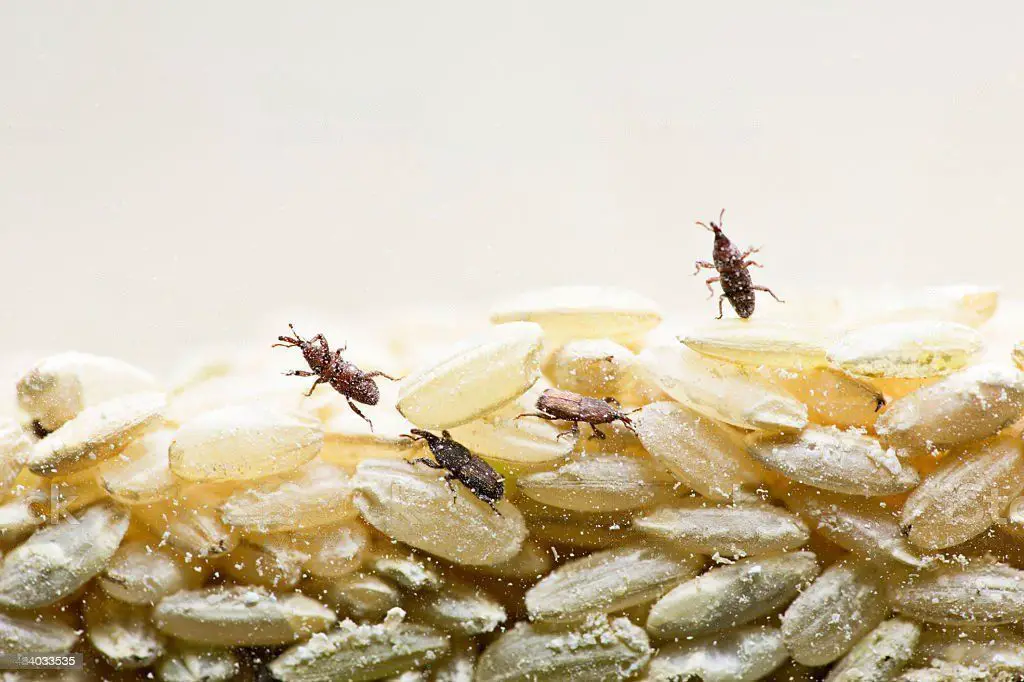
What is The Best Way To Clean Grain Bugs & Weevils From Contaminated Food?
Getting Rid of Small Bugs From Raw Rice, Flour, Semolina, etc
Small bugs can be a nuisance in the kitchen, but there are ways to remove them without using harsh chemicals. In this blog post, we’re going to discuss the best way to remove grain bugs & weevils from contaminated food, or we’ll discuss ten different methods for removing small bugs from grains. We’ll cover methods that can be done in the kitchen and methods that can be done outside. Alongside these suggestions, we’ll also talk about the different kinds of small bugs that can be found in grains, how to identify them, and how to keep them from coming back.
What are small bugs?
A small bug is any insect smaller than a quarter of an inch long. These insects can be found in many places, including grains, flour, and beans. Some of these bugs can cause damage to the food, while others are harmless. There are 10 ways to remove small bugs from grains.
The Best Way To Clean Grain Bugs & Weevils From Contaminated Food
There are 10 ways to remove small bugs from grains.
- Put the contaminated food in a bowl of water and mix with your hands until all pests float to the surface. Drain all water, including pests. Repeat this process again & again until all pests drain with water, and grain become as clear as fresh.
- Place the contaminated food in a sealed freezer bag and freeze it.
- Place the contaminated food under a hottest sun rays until all bugs dies. Strain all contaminated food with strainer.
- Stir all the contaminated semolina or food in a big hot pan with a steel spoon until the sweet aroma spreads throughout the kitchen. Then, let it cool to room temperature. Once the contaminated food has reached room temperature, pour all the food in a large jar. For this method, all bugs’ eggs are dead and infertile.
- Another way is to use a spoon to scoop them up and discard them in the sink.
- For large pieces of food, you can use a vacuum cleaner to remove them.
- Another way is to use a piece of paper towel or a cloth and rub the grains in a circular motion. You can also use a piece of tissue paper and rub the grains vigorously. As a result, all bugs die.
- Place the grain on a wide flat plate and toss it up in the air, including the plate. All the garbage and insects fall forward on the plate. The more you toss and the more you drop, the more bugs. Toss until the grain is cleared of pests.
- Put the grain in a container with a tight-fitting lid.
- Strain all contaminated food with tiny wholes strainer and trash all bugs. Repeat again and again until the grains become as clear as fresh air.
How do you identify small bugs in grains?
Grains are often infested with small bugs. These bugs are most commonly found in cereals, breads, and pastas.
Having a snout is part of the weevil‘s appearance
Beetles without a snout are known as saw toothed grain beetles
The lesser grain borer is cylindrical and dark brown in color
A Flat Grain Beetle is ant-like, less than 3 mm long, and has long antennae
Flour Beetles have a longer than 3 mm short antenna
Conclusion
Many people find that they have a problem with bugs in their grains. This can be a problem because many people are allergic to the little pests. While it may seem impossible to remove the bugs with just your hands, you can follow different ways to do so, as jotted down in this article.




